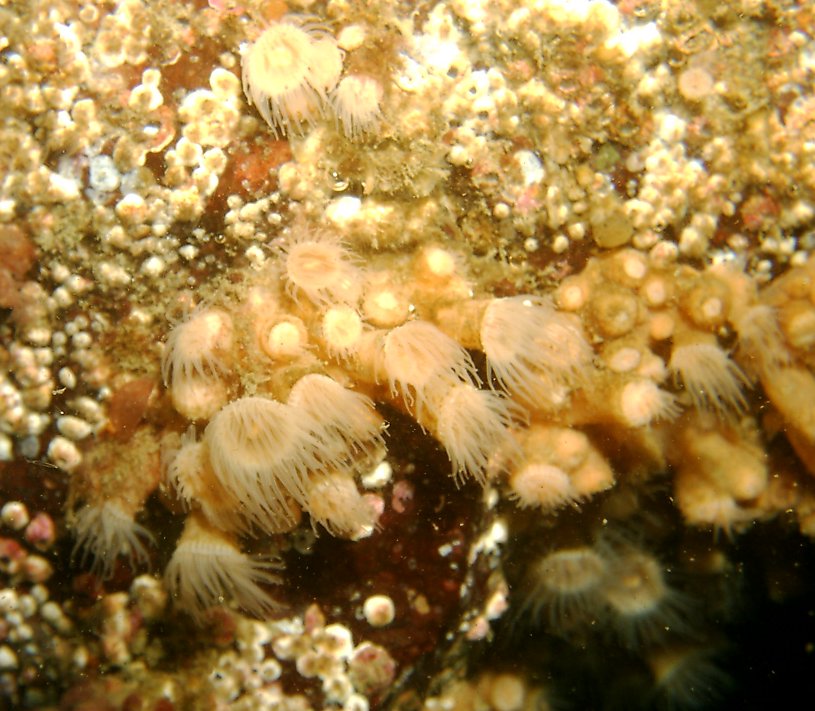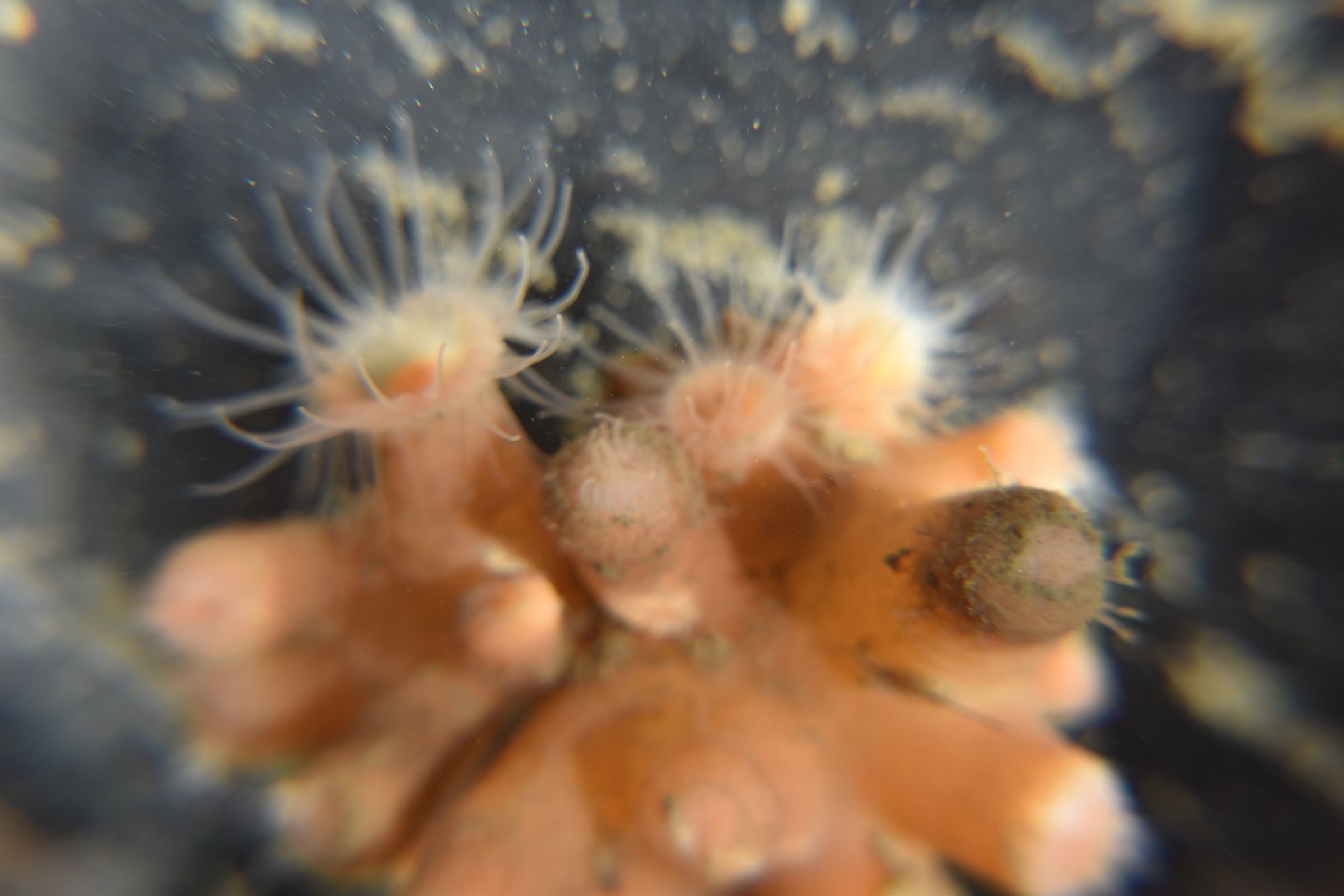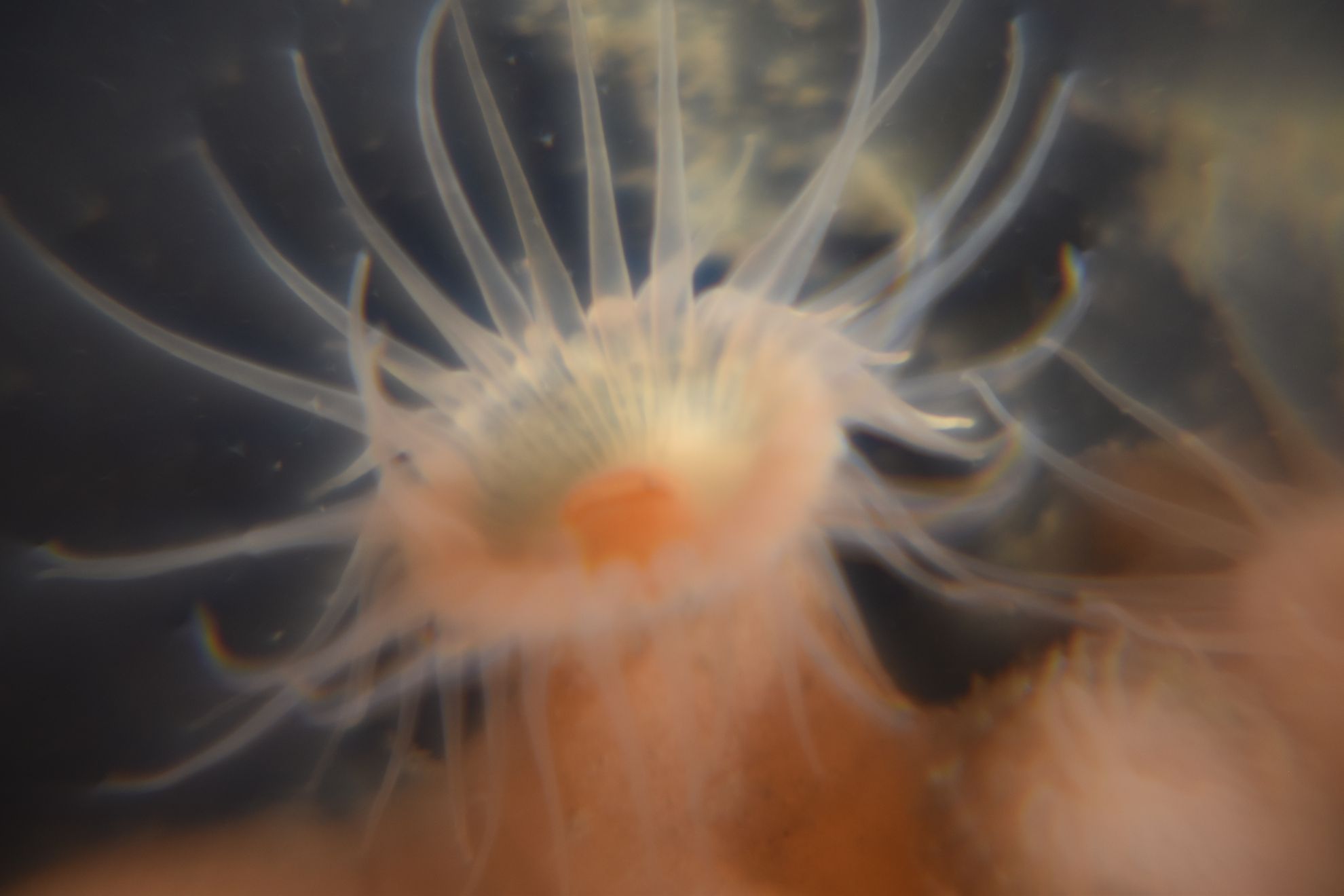Epizoanthus scotinus Wood, 1958Common name(s): Zoanthid, Yellow zoanthid |
|
| Synonyms: |  |
| Phylum Cnidaria
Class Anthozoa Subclass Zoantharia Order Zoanthidea Family Epizoanthidae |
|
| Epizoanthus scotinus from about 5 m depth, Northwest Island. | |
| (Photo by: Jim Nestler, July 2005) | |
How to Distinguish from Similar Species: This is the only species of zoanthid in our area. While Anthopleura elegantissima anemones aggregate, they are not actually attached together, plus they are green and intertidal.
Geographical Range: Western Aleutian Islands, Alaska to northern Channel Islands, CA
Depth Range: Low intertidal to 54 m
Habitat: Rocks in strong current
Biology/Natural
History:
These individuals
reproduce asexually by budding, thus adding to the colony.
They can
also reproduce sexually. These animals may take several hours
to
expand again if they are stimulated to contract.
| Return to: | |||
| Main Page | Alphabetic Index | Systematic Index | Glossary |
References:
Dichotomous Keys:Kozloff 1987, 1996
General References:
Gotshall,
1994
Gotshall
and Laurent, 1979
Harbo,
1999
Kozloff,
1993
Scientific
Articles:
Web sites:
General Notes and Observations: Locations, abundances, unusual behaviors:
I have not seen these colonies before 2005 around Rosario, but perhaps that is because they are not particularly showy and I haven't noticed them. I was startled to see Jim Nestler's 2005 photo of zoanthids right from Northwest Island. I will have to watch more carefully for them.
Authors and Editors of Page:
Dave Cowles (2005): Created original page

